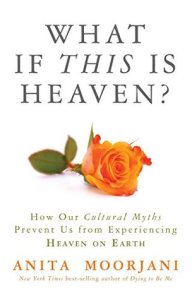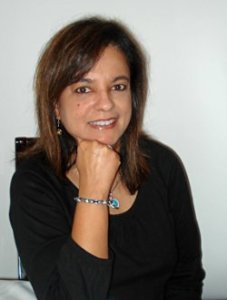
Voyage in the Dark is one of Jean Rhys’s early novels, about Anna, a young woman, who like the novelist, finds herself suddenly uprooted from her island home in Dominica, whisked off by her stepmother Hester, after the sudden and premature death of her father. There is little left to support her and so she must find her own way in London.
‘He was a planter my father. He had a big estate when he first went out there; then he sold it when he married Hester and we lived in town for another four years and then he bought Morgan’s Rest – a much smaller place.’
Hester, her stepmother is a woman who feels hard done by, she married Anna’s father and lived for a while in Dominica, clearly under certain conditions and was quick to return to England after his death, resettling herself in the North, sending Anna south to find a job to support herself, effectively abandoning her.
Not only did she not understand how that place and the way of its people were an intrinsic part of Anna, she openly disapproved of her contact with the black servant girl Francine and would act to remove her influence, the one person who had made Anna feel safe, happy and more at home than anyone else, a woman she could relate to but never be like. All that, now but a memory from her past.
I knew that of course she disliked me too because I was white; and that I would never be able to explain to her that I hated being white. Being white and getting like Hester, and all the things you get – old and sad and everything. I kept thinking, ‘No. … No. …No. …’ And I knew that day that I’d started to grow old and nothing could stop it.
She finds a job as a chorus girl in a travelling theatre and while staying in a seaside town, she and a friend meet two men, one of them Walter, stays in touch, they embark on an affair and for a while he supports her financially – another relationship with conditions, though one she adapts to and finds favourable.
However it prevents her from pursuing employment, she spends days not leaving her room, waiting to hear from him, descending into melancholy and depression, having left the joy, warmth and colour that had been in her life on the island for a dismal English existence far from the expectations of the mother country she had dreamed of from afar.
‘I’m sure it’s beautiful,’ Walter said, ‘but I don’t like hot places much. I prefer cold places. The tropics would be altogether too lush for me, I think.’
‘But it isn’t lush,’ I said. ‘You’re quite wrong. It’s wild, and a bit sad sometimes. You might as well say the sun’s lush.’
Sometimes the earth trembles; sometimes you can feel it breathe. The colours are red, purple, blue, gold, all shades of green. The colours here are black, brown, grey, dim-green, pale blue, the white of people’s faces – like woodlice.
Voyage in the Dark is a melancholy read, it’s a kind of coming-of-age that happens to people not because they have attained a certain age, but as a result of living outside the familiar, whether it’s moving from the countryside to the city or from one country to another and Anna suffers perhaps even more than many migrants, because she looks and almost sounds like she comes from within the English culture, yet is indeed a foreigner and completely alone, without a community or family to commiserate with. She wouldn’t fit in, even if she were to find others born in Dominica, because there too, they had lived in a rapidly disappearing world, a post colonial community without a purpose. While young and living on the island, she experienced little of the world’s (or England’s) perception of them, something hinted at in the way her friends would laugh at her, without her understanding why. Her slow acceptance that she will never fit in, leads to complacency, a lack of care for consequences, hopelessness, helplessness.
I have read a few books by authors coming from the islands and they remain some of my favourite books; Jamaica Kincaid’s The Autobiography of My Mother, Maryse Conde’s Tales From the Heart: True Stories from My Childhood, Simone Schwartz Bart’s The Bridge of Beyond, however they differ significantly from the work of Jean Rhys, because there is a much stronger sense of belonging, acceptance and inevitability in their storytelling. They aren’t a product of white colonialism, they have been affected by it, but they know where home is, that is where they stay and live and learn and struggle, their isolation is only ever temporary, for they are part of a community whether they want it or not.
Jean Rhys through her character Anna, feels and understands what it might be like to be those women who belong and wanted to be part of it, yet she also aspired to live an English dream, only to discover it was an illusion, that she must lower her expectations, make sacrifices and rely on talents never dreamed of in her previous life, to secure her position, one that exists at a lower class than she’d imagined being part of.

Dominica
It is ironic, that she will experience the subservient, misogynistic role of the mistress, a metaphor perhaps for the role her own family and the generations before them inflicted upon the local population of the islands they inhabited. She will feel and experience that discontent that sits alongside silent acceptance of the role of the lesser, the disempowered, as women to men, as slave to master.
Interestingly, many of the reviews focus on the feelings evoked in her first love affair, for me the stronger, more poignant feelings portrayed, were the loss of her childhood innocence, her home, her family – the affair was something she fell into, exploitative on both parts, and sad in that it didn’t follow the path of new, young love, she falls straight into a pattern she will likely repeat, dependence on the experienced, older man, who wants a pretty plaything not a mate.
Written in a simple, easy reading style, the story seeps into your skin and leaves the reader somewhat bereft and disillusioned by the inevitability of it all, knowing that while Anna’s story ends at the beginning of her life in England, some will already know that Jean Rhys’s life continued in a similar vein and that she would rarely if ever find contentedness in her continuous search for a place and a person that could make her feel loved and at home like Dominica and Francine did for her invented character. Not surprisingly, it is when Anna remembers and invokes the past, using all the senses that Rhys’s prose really sings, leaning more towards that incantatory prose from the Caribbean that I have so fallen for.
“I would never be part of anything. I would never really belong anywhere, and I knew it, and all my life would be the same, trying to belong, and failing. Always something would go wrong. I am a stranger and I always will be, and after all I didn’t really care.” ― Jean Rhys, Smile Please: An Unfinished Autobiography
 Jean Rhys was born in the Caribbean island of Dominica in 1890, the daughter of a Welsh doctor and a third generation white Creole mother of Scots origin (‘Creole’ was broadly used to refer to any person born on the island, whether of white or mixed blood). When she was sixteen she was sent to England to school, mocked due to her accent, left and became a chorus girl. After a disastrous affair and disillusioned by events, she began to write, fictionalising many of her experiences and thanks to finding a mentor in Ford Maddox Ford, found moderate success.
Jean Rhys was born in the Caribbean island of Dominica in 1890, the daughter of a Welsh doctor and a third generation white Creole mother of Scots origin (‘Creole’ was broadly used to refer to any person born on the island, whether of white or mixed blood). When she was sixteen she was sent to England to school, mocked due to her accent, left and became a chorus girl. After a disastrous affair and disillusioned by events, she began to write, fictionalising many of her experiences and thanks to finding a mentor in Ford Maddox Ford, found moderate success.
She disappeared for some years only to make a comeback with her best-known novel Wide Sargasso Sea (1966), written as a prequel to Charlotte Brontë’s Jane Eyre, a novel inspired by her indignation at the treatment of Bertha, the first Mrs Rochester, portrayed as the madwoman in the attic, a woman who like Jean Rhys, had been brought to England from the Caribbean – it was written to give Bertha an opportunity to tell her story and to discredit Rochester’s overbearing, superior perspective.

 Anita Moorjani wrote her first book Dying to Be Me: My Journey from Cancer, to Near Death, to True Healing after being tracked down by the late Wayne Dyer, who’d come across her story on the internet and wanted to know more about what she had experienced on the day she had been expected to die but miraculously returned from stage four cancer to heal totally and live.
Anita Moorjani wrote her first book Dying to Be Me: My Journey from Cancer, to Near Death, to True Healing after being tracked down by the late Wayne Dyer, who’d come across her story on the internet and wanted to know more about what she had experienced on the day she had been expected to die but miraculously returned from stage four cancer to heal totally and live.